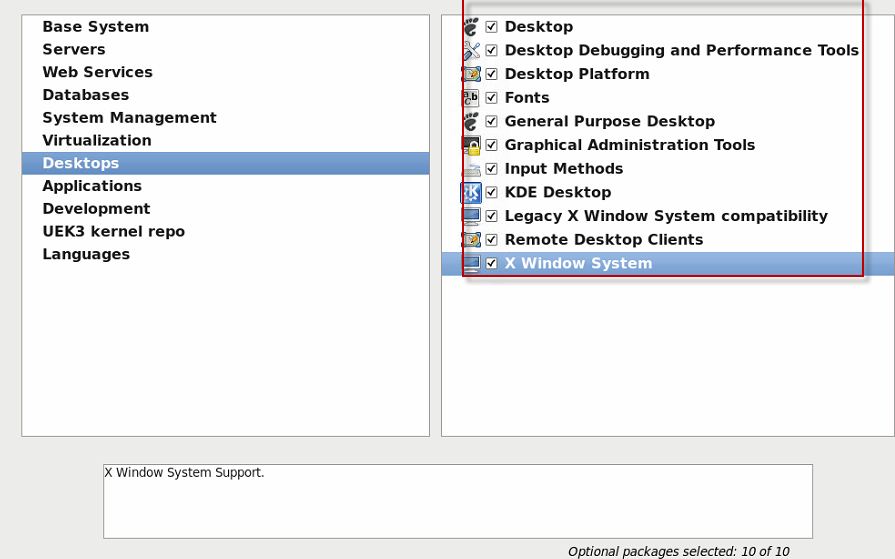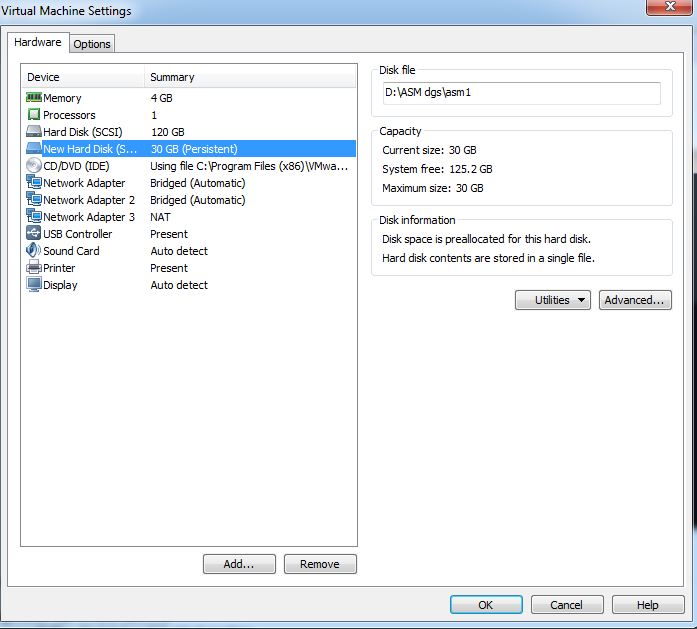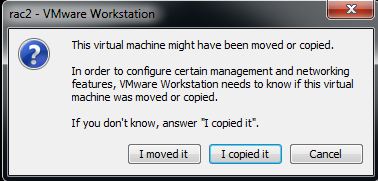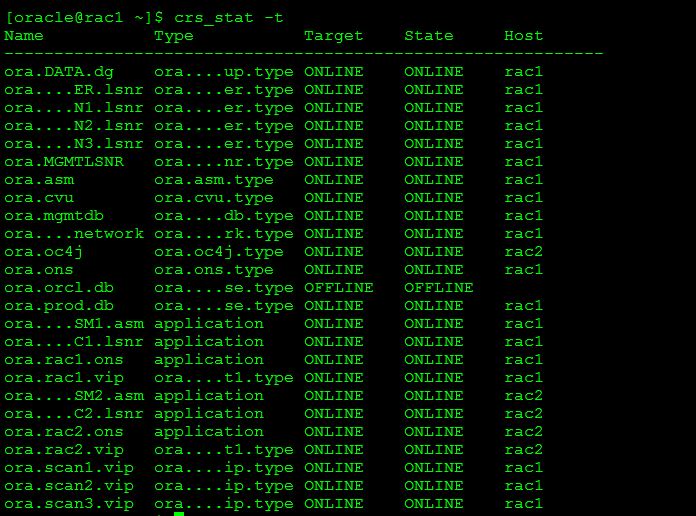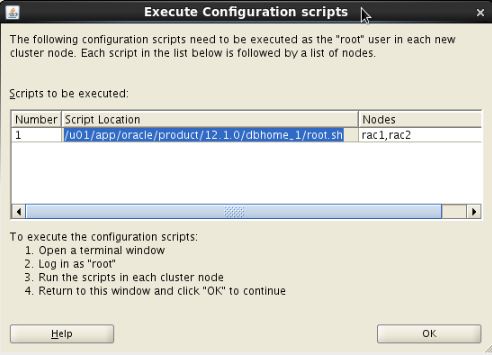Step by Step Install of Oracle RAC 12cR1 on OEL 6.5 using VMware Workstation 10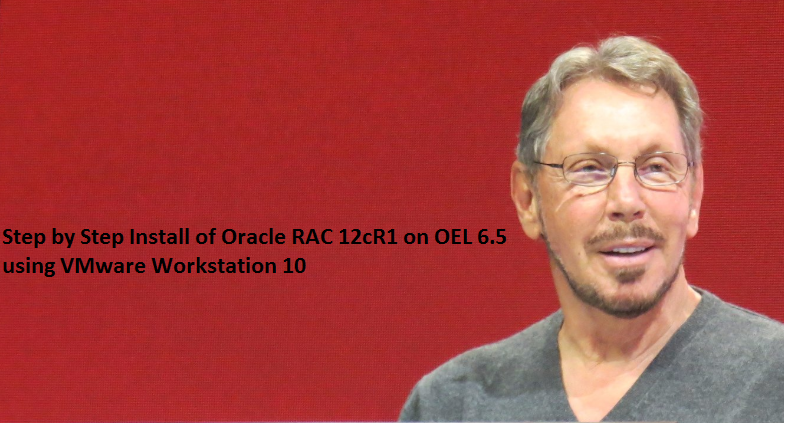
Description:-
In this article we are going to see step by step oracle Rac 12cR1 installation on OEL 6.5
High level steps:-
- Vm workstation 10
- OEL 6.5 install
- DNS nameserver configuration
- Creating a Shared Disk
- Configure Oracle ASM
- Copy the VMware
- Pre-check for RAC Setup
- Install and Configure Oracle Grid Infrastructure for a Cluster
- 12c Release 1 Database Installation
- Post-Check For Rac Setup
Let’s Start the Demo:-
Download Software:-
Download the following softwares,
Steps to install 12cR2 RAC on OS OEL 6.5 on Vmware workstation :-
Steps for Oracle Enterprise Linux 6.5 Installation:-
Step 1:- Start the wizard by choosing, File->New Virtual Machine in the VMware menu. Choose a typical VM.
Step 2:- Skip the installation options and select the option I will install the operating system later.
Step 3:- Select the OS type Linux and Version is 64-bit.
Step 4:- Provide the Virtual machine name and location
Step 5:-Specify the Disk capacity and select option Store virtual disk as a single file
Step 6:- Review the configuration data, and proceed to create the virtual machine.
Step 7:- Under Hardware tab,specify the Memory,CD/DVD -> ISO file location,2 Network Adapters for public and private ip.Both network adapters should be bridged network connections.
Step 8:- Under Options,Shared Folders -> Always enabled.
Step 9:- Add shared folder wizard.Enter the path and name of the shared folder.select the option Enable this share.
Step 10:- Power ON the Virtual machine name ‘rac1’ and start the OS installation.
INSTALL THE ORACLE ENTERPRISE LINUX SOFTWARE :-
Step 11:- Skip the media testing and start the installation
Step 12:- Click Next to start the installation
Step 13:- Select English as a language option
Step 14:- Select the storage option to install OS.
Step 15:- Select Discard any Data
Step 16:- Provide the hostname as below
Step 17:- Configure network settings
Step 18:- Select System eth0 and click on edit and Select Connect Automatically and select IPV4 Setting.
Step 19:- Same as for System eth1
Step 20:- Select the city as and click Next
Step 21:- Provide password for root and confirm it.
Step 22:- Create Custom layout
Step 23:- Please select a device and create it
Step 24:- Install boot loader on device
Step 25:- Select the software type as ‘Database Server’ and select Customize now option.
Step 26:- Select all options as below for Desktop
Step 27:- Click Next to start installation process
Step 28:- Select Reboot.Click on Forward
Step 29:- Select agree option to accept license information
Step 30:- Click Forward and Select connect later
Step 31:- Provide the current date and time and Click Forward
Step 32:- Click Finish to complete the Oracle Linux 6 Installation process.
Step 33:- Login as root user and password.
Step 34:- Check the internet connectivity and network adapters are enabled.
ping google.com
Check the YUM is working by using below command,
yum repolist
The status has to be displayed here.
Step 35:- Install VMware Tools
Step 36:- Check the media VMware Tools is mounted in OS.
Step 37:- Copy the tar file to /tmp directory.
tar -xvf VMwareTools-9.6.1-1378637.tar.gz
Press Enter,if the prompt asks the yes/no option
DNS nameserver configuration:-
Step 38:- Install the bind RPMs to enable the DNS services,
Requirement Packages:-
bind, bind-utils, bind-chroot
[root@rac1:~ ] yum install bind* -y
Step 38:- After installing the bind RPMs,check the below files are present in the directories
/etc/named.conf
Step 39:- Check the files present under this location /var/named directory.
Configuration of BIND rpm:-
Step 40:- Edit the configuration of nameserver
Step 41:- After installing required packages, now define zone files in master configuration ‘named.conf‘ file.
Master DNS Server IP :- 192.168.12.128
Subnet Series:- 192.168.12.1 –subnet range where my hosts are allowed to query.
Change recursion if it YES
Step 42:- Given below is my named.conf file entry, change the configuration file as per your need.
Step 43:- Define your forward and reverse zone file for localdomain.com
Creating Master Zone Files :-
Step 44:- At first let us define forward look-up zone entry. Here we need to create the zone files in the name of what we have define in the named.conf file as below.
- forward.localdomain
- reverse.localdomain
Step 45:- Copy the named.localhost files as forward.localdomain
This is my forward zone configuration, append the below entry and make changes as per your need.
Step 46:- Now, create reverse lookup file, we have already made a copy of loop-back file in the name of reverse.localdomain.com. So, we use this file to configure our reverse look-up.
Step 47:- Copy the named.loopback file as reverse.localdomain
This is my reverse zone configuration, append the below entry and make changes as your need.
Step 48:- Check the group ownership of forward look-up & reverse look-up files, before checking for any errors in configuration.
Step 49:- Change the group to named on both forward and reverse zone files
Step 50:- Check the Context of the files under /etc/named.conf.The context should be named_conf_t.If its different than this then we need to restore the context using,
[root@rac1:~:] restorecon /etc/named.conf
Step 51:-Now, check for the errors in zone files, before starting the DNS service. First check the named.conf file, then check other zone files.
Step 52:-Start the named service and make it persistent.
Step 53:-Finally, test the configured Master DNS zone files (forward and reverse), using dig & nslookup tools.
/etc/resolv.conf entries:-
nameserver 192.168.12.128
rotate
options timeout:1
options attempts:2
Step 54:-Everytime server restarts,the /etc/resolv.conf flushes out.So change the file as immutable to avoid modification even though logged as root user.
Step 55:- This is the entry of /etc/hosts file for both nodes.The hostnames and its ips should be same which we mentioned in forward and reverse zone file.
Step 56:-Install the 12cR1 preinstall rpm
Install required Oracle ASM rpms :-
Step 56:-Check all the required oracleasm rpms are installed
Step 57:- Create the required groups and users,
If the oracle user does not exist, enter the following command to create it
groupadd -g 1000 oinstall
groupadd -g 1200 dba
useradd -u 1100 -g oinstall -G dba oracle
Step 58:- Create Password for oracle user
passwd oracle
Step 58:-Create the required directories for GRID and ORACLE_HOME binaries
Step 59:- Disable secure linux by editing the “/etc/selinux/config” file, making sure the SELINUX flag is set as follows.
SELINUX=disabled
Change Enforcing to disabled
Step 60:- Append the following lines to the “/etc/sysctl.conf” file.
fs.aio-max-nr = 1048576
fs.file-max = 6815744
#kernel.shmall = 2097152
#kernel.shmmax = 1054504960
kernel.shmmni = 4096
# semaphores: semmsl, semmns, semopm, semmni
kernel.sem = 250 32000 100 128
net.ipv4.ip_local_port_range = 9000 65500
net.core.rmem_default=262144
net.core.rmem_max=4194304
net.core.wmem_default=262144
net.core.wmem_max=1048586
Step 61:-Run the following command to change the current kernel parameters.
/sbin/sysctl –p
Step 62:- Add the following lines to the “/etc/security/limits.conf” file.
oracle soft nproc 2047
oracle hard nproc 16384
oracle soft nofile 4096
oracle hard nofile 65536
oracle soft stack 10240
Step 63:- Stop iptables service :-
service iptables stop
chkconfig iptables off
Step 64:- Check the ntp service is running,
If you want to use NTP, you must add the “-x” option into the following line in the “/etc/sysconfig/ntpd” file.
OPTIONS=”-x -u ntp:ntp -p /var/run/ntpd.pid”
Step 65:- Restart the ntp services,
# service ntpd restart
Step 66:-Creating a Shared Disk:-
Select Edit virtual machine settings.Add Hard Disk
Step 67:- select Disk Type as SCSI and Independent mode and persistent
Step 67:- Create a new virtual disk and specify Disk capacity and select Allocate all disk space now
Step 68:- Browse the disk file location and Click Finish to create disk
Step 69:- Finally check the Hard Disk is added successfully.
Step 70:- After Power ON the VM,create the partition
Step 71:- After the partition is created,verify using below command.
Configure Oracle ASM:-
Step 72:- Change the ownership of the partition
Step 73:- Enable the oracleasm partition
Step 74:- Copy the VMware files .vmdk and .vmx files from rac1 folder and make another folder as rac2
Step 75:- Open the .vmx file and select Edit virtual machine settings and under Options change the virtual machine name as rac2.
Step 76:- Power ON the vmware rac2 and click I copied it option
Step 77:- After clone,change the hostname as below
Step 78:- Change the network adapter names from eth3,eth4,eth5 to eth2,eth1,eth0.
Step 79:- Delete the old entries of network adapters information from 70-persistent-net.rules and restart the VM rac2.
12cR1 GRID Installation:-
Step 80:- Unzip the sofware for GRID installtion.
cd /u01/grid
unzip p17694377_121020_Linux-x86-64_3of8.zip -d /u01
SSH User equivalence setup:-
Step 81:- Make sshsetup on both nodes
rac1 node :-
./sshUserSetup.sh -user oracle -hosts “rac1 ” -noPromptPassphrase
It will prompts for oracle user password.
rac2 node:-
./sshUserSetup.sh -user oracle -hosts “rac2 ” -noPromptPassphrase
Copy the public key from id_rsa.pub in both nodes to authorized key file
Copy the authorized_keys file to the rac2 node.
Pre-check for RAC Setup :-
Step 82:- Run the cluvfy setup to pre-check both nodes
Step 83:- runcluvfy fails because of this parameter,add the below parameter into /etc/sysctl.conf file
Step 84:- After cluvfy got successful,execute the runInstaller
Step 85:-Select the Install and Configure Oracle Grid Infrastructure for a Cluster
Step 86:-Select the Configure a standard cluster option
Step 87:-Select Typical installation.
Step 88:-Edit the SCAN name as per your configuration and provide public and private hostnames for both nodes.
Step 89:-Test SSH User connectivity by providing username and password for oracle.
Step 90:-Check the ethernet adapters and subnet series of both nodes.
eth0 – public IP
eth1 -private IP
Step 91:-Provide the GRID_HOME location and SYSMAN password
Step 92:-Provide diskgroup name and set redundancy as external
Step 93:-If it shows empty,select Change Discovery Path option ‘/dev/oracleasm/disks’
Step 94:-Set the inventory path location and click Next
Step 95:-Skip the Root script execution configuration and click Next
Step 96:-After verification check,the below rpm is missing.Install cvqdisk rpm on both nodes
Step 97:-Install cluvfy rpm in both nodes.
cvqdisk rpm present in sofware folder,
cd /u01/grid/rpm
Step 98:-Skip the below warnings,we need to provide more memory for both nodes and device checks for ASM failed ‘/dev/oracleasm/disks’ should be as oracle user and oinstall group.
Step 99:-Click Install to proceed the GRID 12cR1 Installation
Step 100:-Execute the below configuration scripts one by one in all nodes.
On Node 1 (rac1) :-
On Node 2 (rac2) :-
Step 101:-Click OK to continue the GRID installation.
Step 102:- Click Close to finish the GRID 12cR1 installation
Post check status for GRID environment:-
Check Cluster status,
crsctl check cluster -all
12c Release 1 Database Installation :-
Step 103:- Unzip the software to install database
Step 104:-Execute the runInstaller option,
Step 105:-Skip the security updates
Step 106:-Select the option Create and configure a database
Step 107:-Select the Oracle Real Application Clusters database installation
Step 108:-Select the Admin-Managed option
Step 109:-Select the both nodes of the cluster
Step 110:-Select the database edition as Enterprise edition
Step 111:-Provide the location for ORACLE_HOME and SYS password
Step 112:-Click Install to proceed the Oracle database 12c installation
Step 113:-Execute the root.sh on both nodes,
Step 114:-Now, the DBCA creation invokes
Step 115:- We are done with the Oracle 12c database installation
Step 116:- Add the environment entry for GRID and database to .bash_profile
Post check for RAC database:-
To check the database name,
srvctl status database -d dbname
To check the instance name,
srvctl status instance -d dbname -i instancename
Catch Me On:- Hariprasath Rajaram
LinkedIn:https://www.linkedin.com/in/hari-prasath-aa65bb19/
Facebook:https://www.facebook.com/HariPrasathdba
FB Group:https://www.facebook.com/groups/894402327369506/
FB Page: https://www.facebook.com/dbahariprasath/?
Twitter: https://twitter.com/hariprasathdba






























